Kim Hermanson's Blog, page 17
April 4, 2022
“It’s not what you look at, it’s what you see.” – Henry David Thoreau
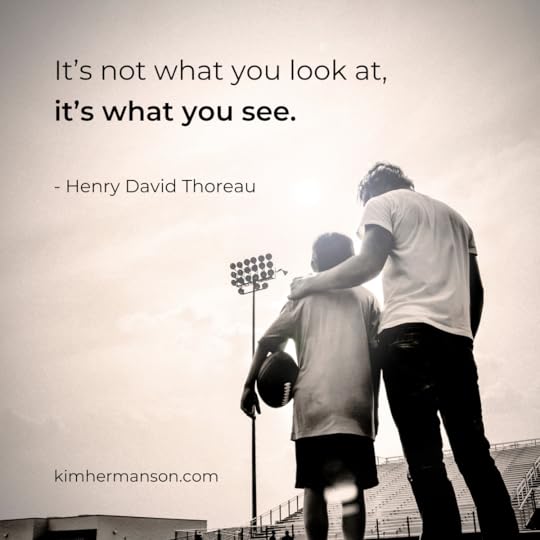
Henry David Thoreau said, it’s not what you look at, it’s what you see.
“When life brings you lemons, make lemonade.” “There’s another opportunity around the next corner.” “Better stick to the straight and narrow.” “Everything feels heavy.”
These four aphorisms all reveal very different perspectives on life.
We can read hundreds of self-help books and spend thousands of dollars on therapy, or we can change the metaphor through which we view our world
When we change the primary metaphor that’s influencing and motivating our actions, we change our lives.
What’s the metaphor through which you see the world?
By the way, you can purchase my Psychology of Metaphor course here
March 30, 2022
Teaching as a creative playground.

Teaching has always been a creative playground for me–a way to explore things that fascinate me and experiment with new ideas.
Peter Vaill wrote, “The essential starting point of artistic consciousness is acknowledging that something is more than I can possibly know.” That place of the unknown is mysterious and juicy. We don’t know what we’ll discover.
Holding an attitude of artistic consciousness is how I like to teach. As soon as I thoroughly understand my subject matter, I grow bored.
When I teach what you know, I bore you. And when I teach what I know, I bore me. So what I like to do is teach what I don’t know.
When I enter a teaching situation as a learner, mystery is present. There’s space for a greater wisdom to speak.
That’s what makes teaching alive.
March 28, 2022
Metaphor provides clarity we can’t get any other way.
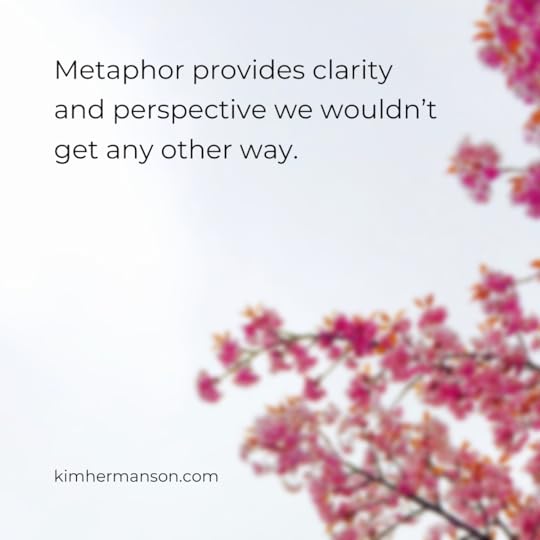
This is true for all of us.
We valiantly search for the explanation, the description, the words. But when those words aren’t there, we unconsciously drop into another part of our brain–the part of our brain that works in metaphor.
Metaphor allows us to understand and speak about things that are unknown, vague, or abstract. It opens up entirely new spaces of possibility, depth, and clarity.
Art professor and Guggenheim fellowship recipient Richard Shiff said this:
acts of genius or dramatic breakthroughs in fields of study can affect our present world order only if they are joined to it by means of a powerful metaphor. Indeed establishing the metaphoric bridge itself may be considered the act of genius, and the entry into new areas of knowledge is its consequence.
Metaphor provides clarity and perspective we wouldn’t get any other way.
If you’d like to learn more about the power of metaphor, download my free PDF, 8 Steps for Inspired Breakthroughs with the Power of Metaphor on my home page: https://www.kimhermanson.com/
March 26, 2022
The world is desperate for real revolution. We need revolutionary acts of teaching and learning.
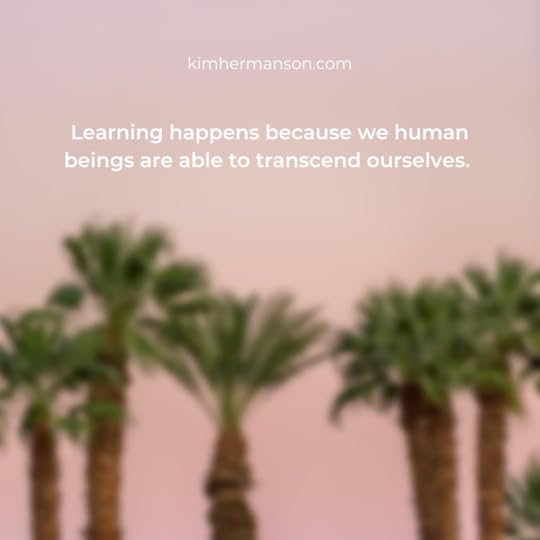
Learning, by its very nature, moves us beyond established systems of knowledge. It takes us beyond our comfort zones.
It’s no wonder autocratic societies limit education and a free press.
Incremental change is important, but the world is desperate for real revolution. We need revolutionary acts of teaching and learning.
Learning happens because we human beings are able to grow and transcend ourselves. Let’s do that.
Learning happens because we humans can transcend ourselves.

Learning, by its very nature, moves us beyond established systems of knowledge. It takes us beyond our comfort zones. (No wonder autocratic societies limit education…)
Incremental change is important, but the world is desperate for real revolution. We need revolutionary acts of teaching and learning.
Learning happens because we human beings are able to transcend ourselves. Let’s do that.
March 23, 2022
When you’re grieving or need to rest, work with the metaphor of ‘heavy’
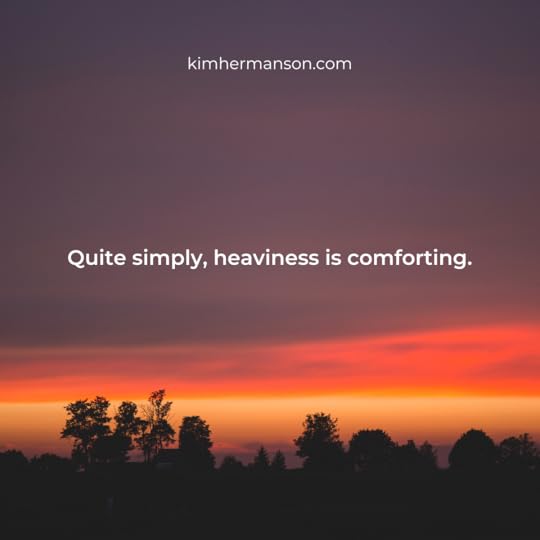
As I was packing up my mother’s nursing home room after her death, I found a little heart-shaped stone that said ‘serenity’ on it. I took it back to California with me and I hold it frequently. It’s heavy, it has form, it feels soothing, and it reminds me of her.
I love the weight of that little stone.
Because of our culture’s extreme focus on left-hemisphere reasoning, we’ve dismissed the powerful healing qualities of simple aesthetic energy. Quite simply, heavy things can be comforting.
For example, it’s not surprising that weighted blankets reduce anxiety and stress. Or that mud baths are so popular. Or that we use the expression “fall asleep” because heavy things fall (light things float). In order to fall asleep, we need to be heavy, energetically speaking.
If you need to grieve, heal, or rest, work with HEAVY. Holding a small, heavy object can be helpful, but you can also bring in the energy of HEAVY through visualizing a metaphoric image:
Call to mind an image of something heavy. Then imagine yourself BEING that thing.
When I have a headache, I imagine that I’m thick mud slowly sliding down the side of a cliff. The weightiness of the mud viscerally shifts my body into a place of healing. When I want to fall asleep, I imagine myself to be heavy snow gently falling onto the ground.
HEAVY is a healing quality.
For more on the healing power of metaphoric images, check out my new book, Deep Knowing: Entering the Realm of Non-Ordinary Intelligence.
Quite simply, heaviness is comforting.

As I was packing up my mother’s nursing home room after her death, I found a little heart-shaped stone that said ‘serenity’ on it. I took it back to California with me and I hold it frequently. It’s heavy, it has form, it feels soothing, and it reminds me of her.
I love the weight of that little stone.
Because of our culture’s extreme focus on left-hemisphere reasoning, we’ve dismissed the powerful healing qualities of simple aesthetic energy. Quite simply, heavy things can be comforting.
For example, it’s not surprising that weighted blankets reduce anxiety and stress. Or that mud baths are so popular. Or that we use the expression “fall asleep” because heavy things fall (light things float). In order to fall asleep, we need to be heavy, energetically speaking.
If you need to grieve, heal, or rest, work with HEAVY. Holding a small, heavy object can be helpful, but you can also bring in the energy of HEAVY through visualizing a metaphoric image:
Call to mind an image of something heavy. Then imagine yourself BEING that thing.
When I have a headache, I imagine that I’m thick mud slowly sliding down the side of a cliff. The weightiness of the mud viscerally shifts my body into a place of healing. When I want to fall asleep, I imagine myself to be heavy snow gently falling onto the ground.
HEAVY is a healing quality.
For more on the healing power of metaphoric images, check out my new book, Deep Knowing: Entering the Realm of Non-Ordinary Intelligence.
March 21, 2022
We need mystery for the expansion of our knowing to happen.
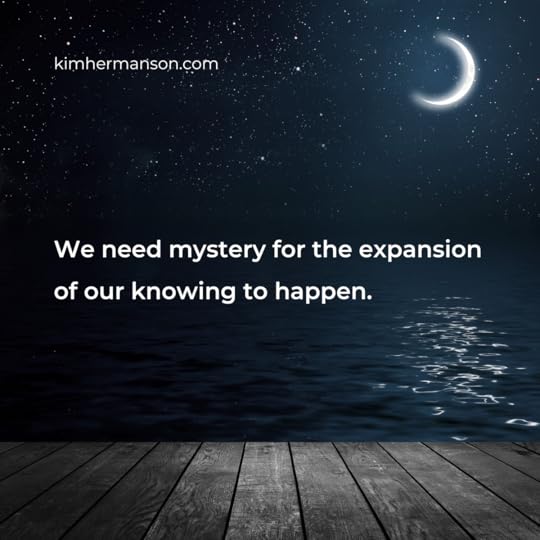
Keith Haring said, “If there is no mystery, there is only propaganda.”
While we may think learning is about knowing, I think it’s more about not knowing. The ancient Greek philosopher Epictetus said, “It is impossible to begin to learn that which one thinks one already knows.”
When you know something in your mind to be true, is there open space in your mind for another view? Not likely. When we’re certain that we “know,” we’re at risk of trouble, because we now have something static rather than something that’s fluid.
Certainty is a closed loop.
What we need to do is find a way to-know-and-not-know at the same time–hold what we know in one hand and hold the other hand open. We are fully aware of all the expertise and information we’ve acquired, but we’re not letting it close our minds to other possibilities. We are holding one hand open to other ways of knowing, other things that we can’t come up with on our own.
We need mystery for the expansion of our knowing to happen.
March 19, 2022
Learning requires a pleasurable environment – my article with Mihaly Csikszentmihalyi
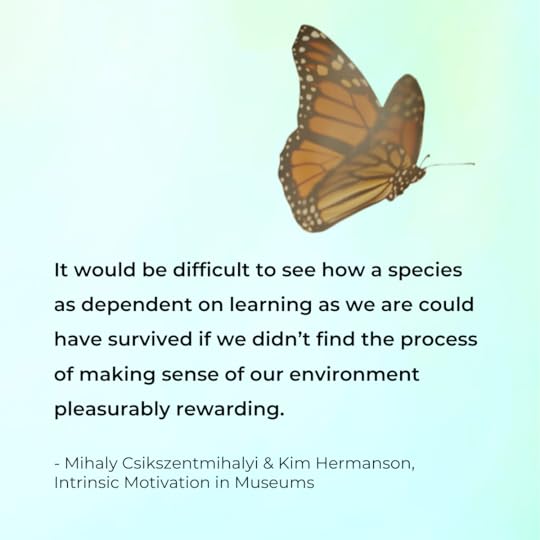
“It would be difficult to see how a species as dependent on learning as we are could have survived if we didn’t find the process of making sense of our environment pleasurably rewarding.”
~ Mihaly Csikszentmihalyi and Kim Hermanson
~ From the article “Intrinsic motivation in museums: Why does one want to learn? by Mihaly Csikszentmihalyi and Kim Hermanson”. Museum News, 1997.
To learn, our environments must be pleasurable.

“It would be difficult to see how a species as dependent on learning as we are could have survived if we didn’t find the process of making sense of our environment pleasurably rewarding.”
~ From the article “Intrinsic motivation in museums: Why does one want to learn? by Mihaly Csikszentmihalyi and Kim Hermanson”. Museum News, 1997.



